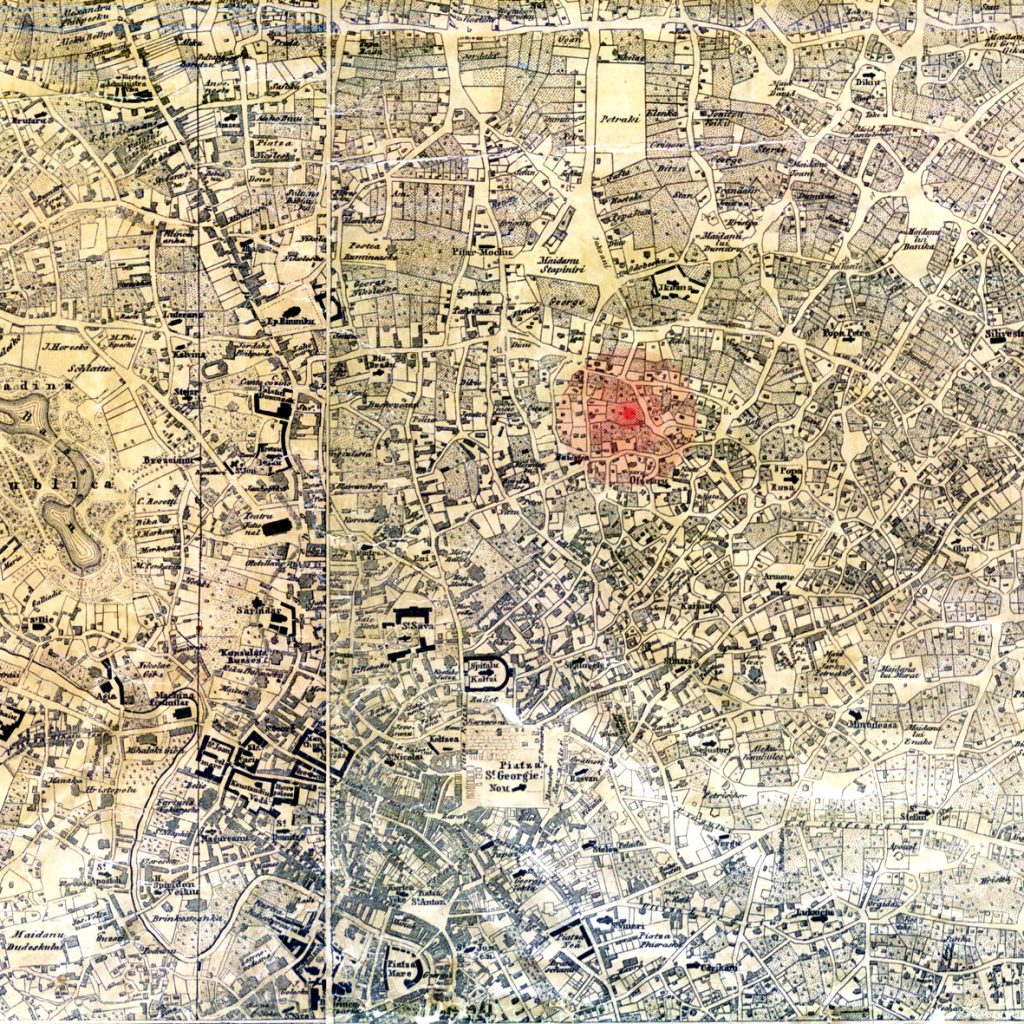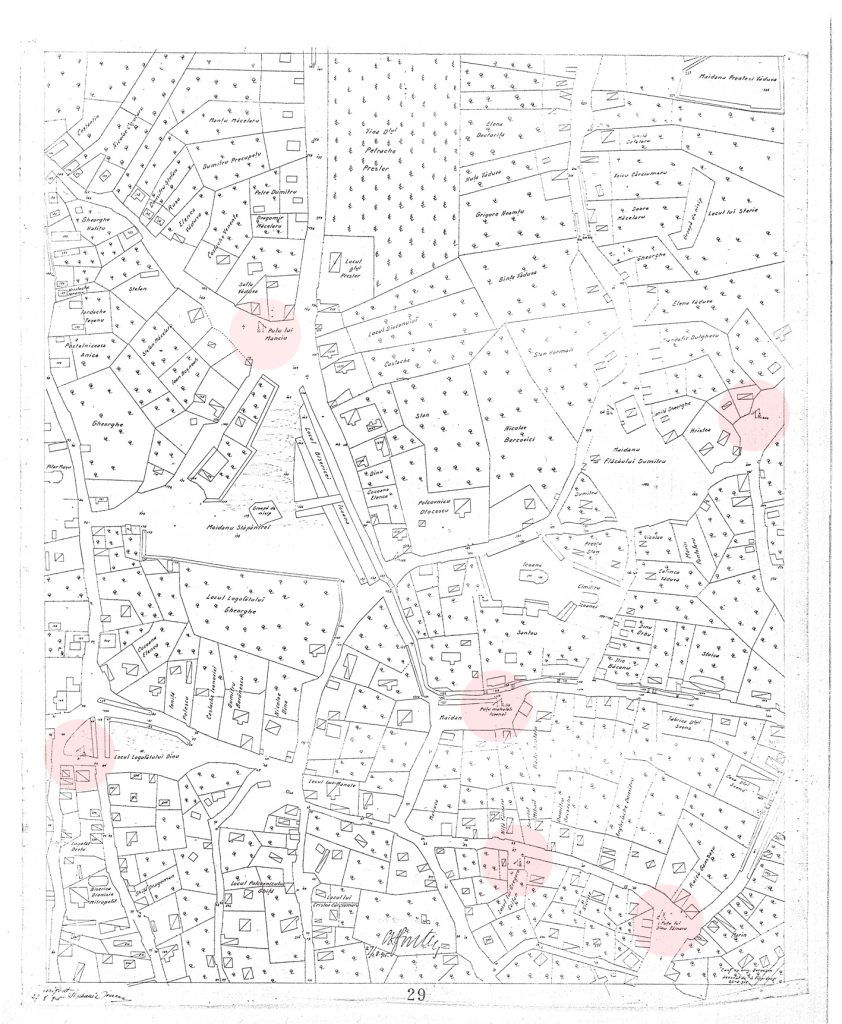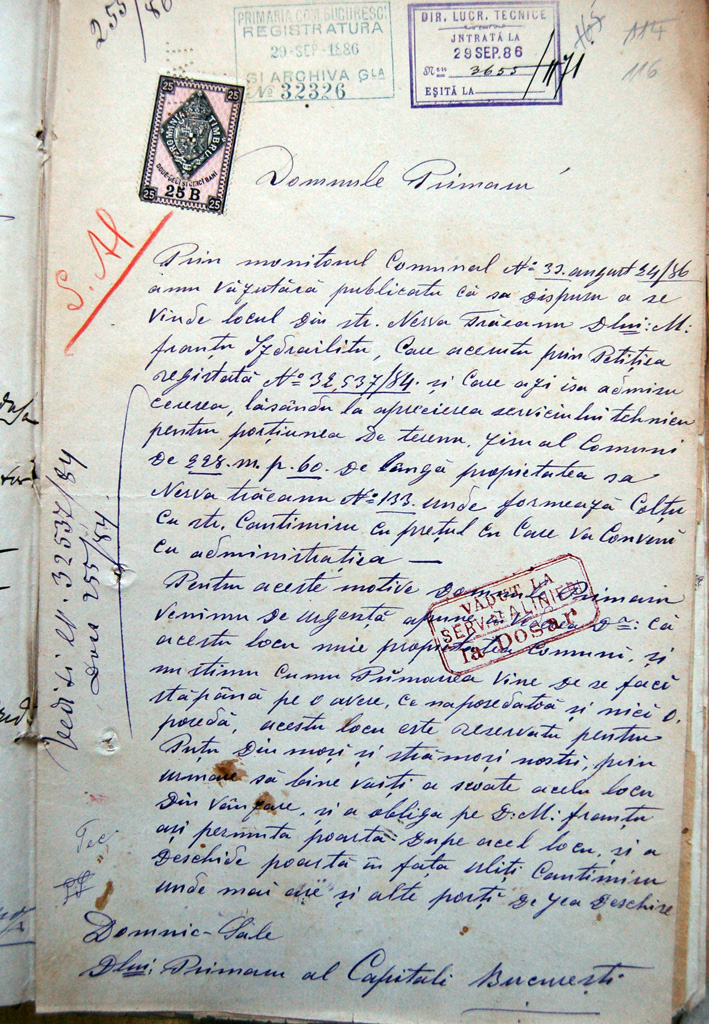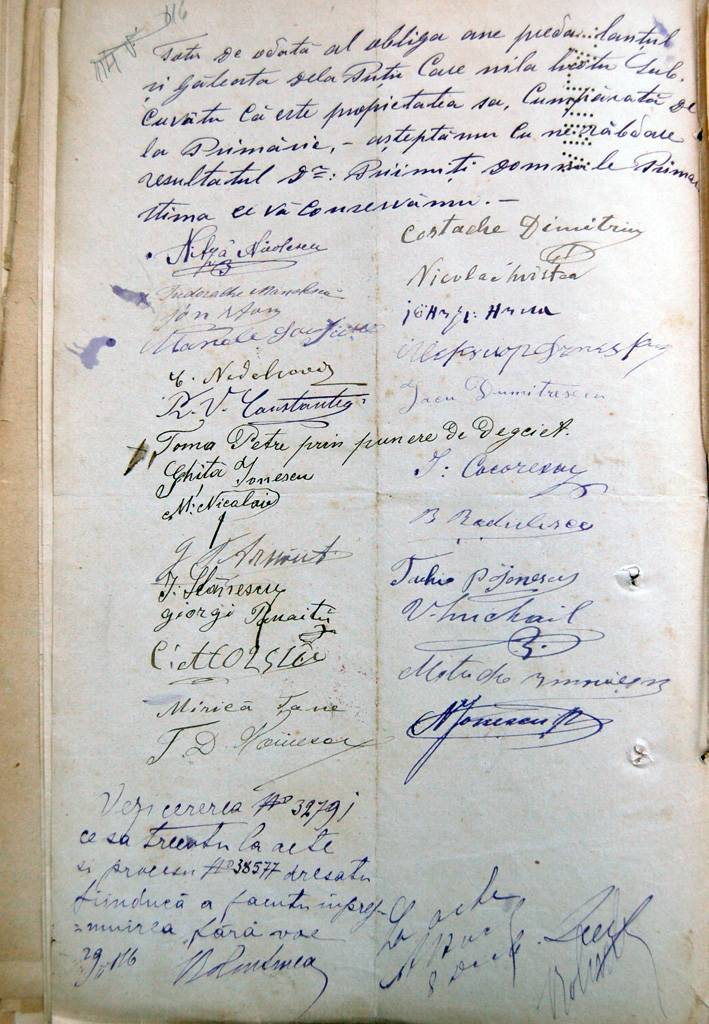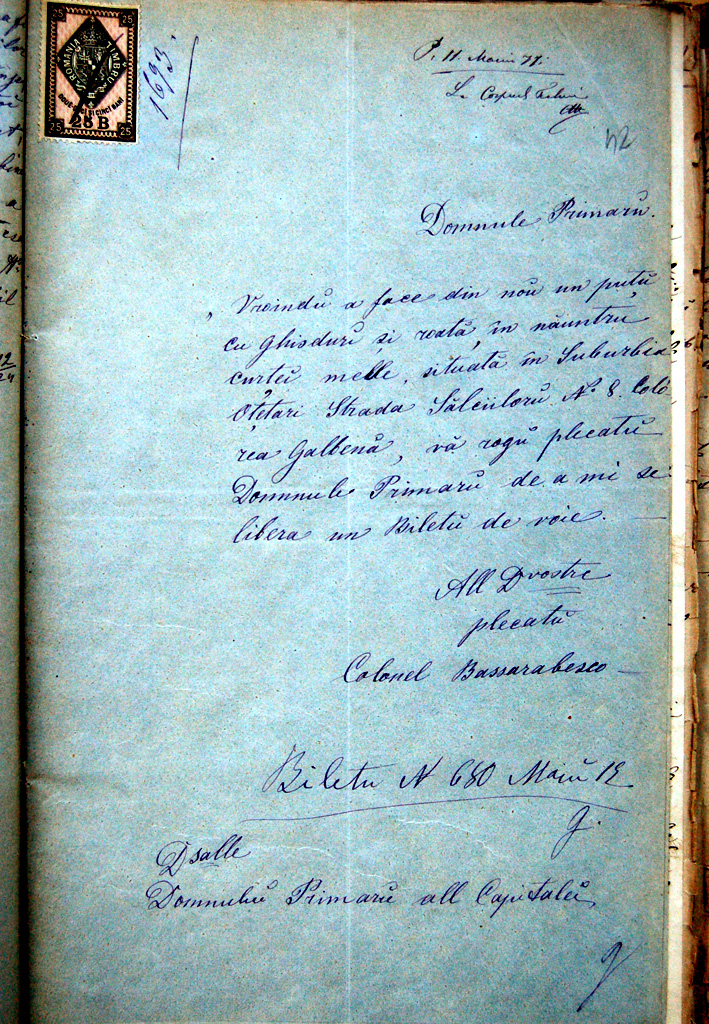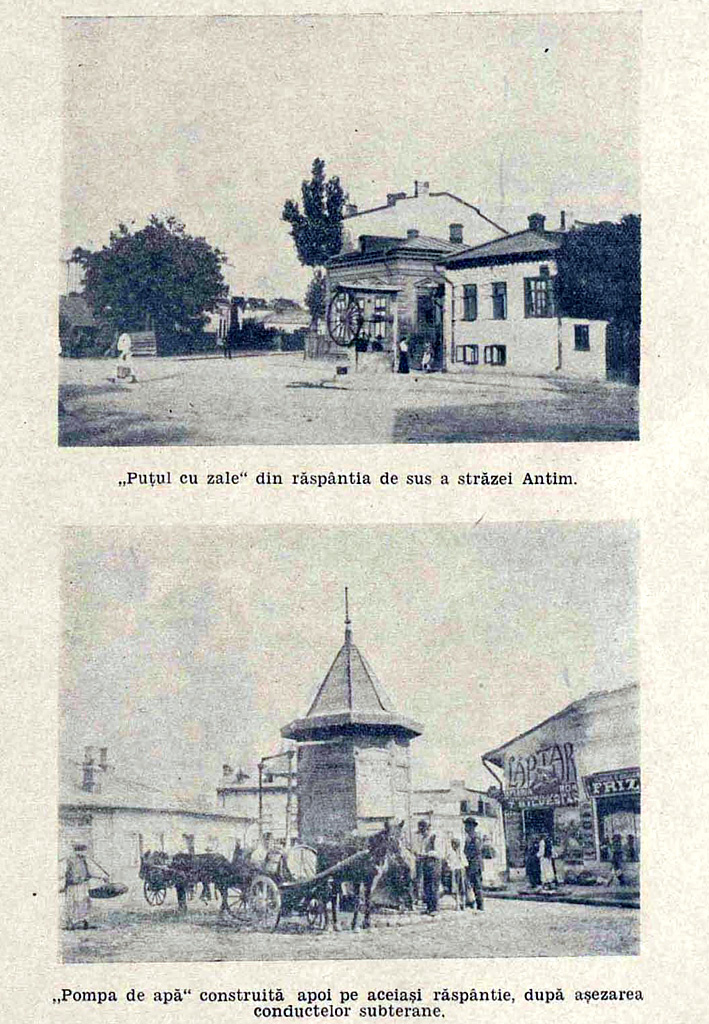This place on the edge of the medieval city and which was already at the center of residential development during the Phanariot reigns was determined by a legendary watercourse of the capital, the Bucurestioara stream.
This water is known exclusively from the descriptions of some old documents or from various testimonies interpreted by historians, because the first plans prove that at the end of the 18th century this watercourse had already become that drain filled by various "uncleanses" who had justified it nicknamed "Căcata" and which no longer counted as a topographic landmark worthy of being placed on the map.
And yet, springing from the Icoana marsh, then flowing very close to the area where the house we are interested in is located today, this stream generated another wet area which, it seems, determined the very name of the slum to which this house belonged, namely Batiştea, because next to the church of the same name was the "batistea" - a place where the cattle gathered to water.
Then Bucurestioara served further downstream all those relatively dirty activities of the city - butchers' and fishermen's seats - which gave the name to the Scaune slum and later to the street that led from the city center to the Batiştei slum.
Without being proven as a fact without any doubt, this primitive economic axis was also the approximation of the route of the old road of Târgovişte that left the capital through Herăstrăului Street, a road abandoned precisely because of the special difficulties that the muddy terrain posed carts loaded with goods, which often got stuck in those places in rainy times.
To all this we should also add that Vodă Constantin Brâncoveanu had opened a new road that marked the city later: Mogoşoaiei Bridge, which later became Calea Victoriei. Therefore, the area around the house in Caragiale no. 11 was once a very wet one, which must have greatly favored the rich vegetation, as Bucharest had in general.
In particular, however, here the vegetation remained in the memory of the place through the names of the streets, especially that of Sălciior, today Thomas Masaryk. The initial name of this street in the immediate vicinity is given by the willows that were near Bucureştióara, from which the street began, somewhere close to the intersection with today's Jean Louis Calderon Street. Or at least that's what historian Giurescu and Tzigara Samurcaş claim.
The latter, based on his own memories, shows that the willows grew from this street all the way to the Icoana swamp. The Icoana swamp or pond had gradually dried up so that on Borroczyn's plan from 1846 we see that there was even a sand pit there, like many other such sources of construction material in the city of the time.
And yet, the renovation was done in 1871-1873 and an alignment plan of the place from 1870 is very clear in showing that there was still a lake in the triangle of today's park. We could imagine that if the willows gave the name to the street that intersected Rotarilor (today Caragiale) then it must have been the same with the lindens (Teilor was the old name of Vasile Lascăr street, after it had been called Oţetarul for a while) or maybe and with the vinegar makers (although historians attribute the name of this street to the vinegar producers and not to the trees with this name).
And yet, the renovation was done in 1871-1873 and an alignment plan of the place from 1870 is very clear in showing that there was still a lake in the triangle of today's park. We could imagine that if the willows gave the name to the street that intersected Rotarilor (today Caragiale) then it must have been the same with the lindens (Teilor was the old name of Vasile Lascăr street, after it had been called Oţetarul for a while) or maybe and with the vinegar makers (although historians attribute the name of this street to the vinegar producers and not to the trees with this name).
In addition to these, wells with guides were also dug in people's yards. Several requests for the authorization of such wells were kept in the area, on Sălciilor street. However, we know from the complaint to the ruler by the inhabitants of the Batistea slum in March 1790 that the water from this well was willow and made people sick. The water supply was in the project as early as 1885, but there was still talk of the future in 1905 about the main pipeline III that would have passed on Rotarilor street.
And yet, the mayor's report for the years 1898 - 1902 talks about the installation of sluices to protect the water columns, 16 in number, and the first one mentioned was the one at the intersection of Rotarilor streets with St. Spiridon (today Maria Rosetti). Somewhat earlier, around 1881, the streets here were among the first beneficiaries of rainwater drainage pipes.
